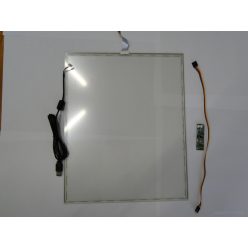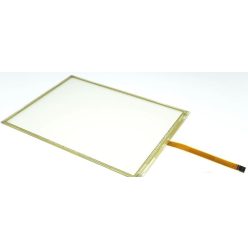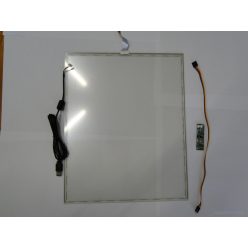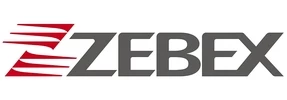Resistive touch sensors for industrial displays and kiosks
The resistive touch sensors in this category are designed for industrial and commercial projects where reliability and easy integration matter more than multi-touch gestures. You can choose from several sizes, starting from the compact 10.4" flat resistive touch screen with hardened USB controller, through the versatile 19" flat resistive touch screen with USB controller, up to the large-format 22" flat resistive touch screen with USB controller for customer-facing applications.
All panels feature USB data interface, so they can be connected directly to industrial PCs, measurement instruments or kiosk systems. Thanks to resistive technology they work precisely with gloves, stylus or other tools, making them ideal in environments where capacitive touch screens are unreliable. The specified operating temperature range and active area options help you select the most suitable panel for your project.
Resistive touch sensors for industrial, medical and retail projects
Resistive touch sensors are pressure-sensitive panels built from multiple layers that react to any kind of touch – fingers, gloved hands, stylus or special tools. This category is aimed at projects where long-term reliability, predictable supply and robust operation are more important than sophisticated gesture control. The 10.4" flat resistive touch screen with hardened USB controller is an excellent choice for service terminals, diagnostic equipment or compact industrial controllers, while the 19" flat resistive touch screen with USB controller and the 22" flat resistive touch screen with USB controller fit larger operator panels and customer-facing kiosks.
All panels share a USB data interface, which makes integration with existing PC-based systems, HMI terminals, kiosks or POS and information terminals straightforward. The recommended indoor operating temperature range of 10–40 °C and the guidelines for customer-area use help you design the right mechanical and environmental conditions. Resistive technology is tolerant to dust, moisture and changing lighting conditions, so it delivers stable, predictable operation in interactive installations, instrument panels and special-purpose control interfaces.
Compared to capacitive touch screens, resistive panels typically offer single-touch input and slightly lower optical clarity, but in return they are more cost-effective and much more flexible in harsh or gloved environments. The available active area ranges of 10.1–13", 13–19.5" and 19.5–24" cover most typical kiosk and industrial HMI layouts, allowing you to deploy different screen sizes within the same project while keeping a consistent user experience. The 19" flat resistive touch screen with USB controller, the 19" flat resistive touch screen with USB controller variants and the 22" flat resistive touch screen with USB controller provide options for different mounting and viewing distance requirements.
To ensure long service life it is essential to respect the specified operating conditions and perform regular maintenance. Avoid sharp, scratching objects on the surface and clean the panel periodically with a slightly damp, non-aggressive cloth. In high-traffic, 24/7 systems, it is worth checking the condition and calibration of the panels from time to time. Local technical support and workshop services help you solve any issues quickly, so your touch screens can return to normal operation with minimal downtime.
From a project-management perspective, financing and logistics are just as important as technical details. Models that are available from stock can be delivered immediately, while scheduled deliveries help you roll out larger installations in several phases. Flexible shipping methods, full customs handling and professional logistics ensure that the panels arrive on time and in perfect condition. Options such as post-payment, invoicing in foreign currency and project-based custom quotations make your resistive touch projects financially transparent and easier to plan.
FAQ – frequently asked questions about resistive touch sensors
When should I choose a resistive touch sensor instead of a capacitive one?
Resistive technology is ideal in industrial, medical or retail environments where users often wear gloves, use a stylus or work in dusty or dirty conditions.
Do these panels support multi-touch gestures?
Most resistive touch panels are designed for single-touch input, so common pinch or rotate gestures are not available, but the input is very precise and predictable.
What kind of maintenance do resistive touch screens require?
They need periodic gentle cleaning, protection from sharp objects and occasional functional checks. This significantly extends the lifetime of the display.
What size and interface options are available in this category?
You can choose between 10.4", 19" and 22" flat resistive panels, all with USB interface, which simplifies connection to industrial PCs and kiosk systems.











